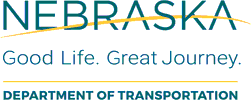Nebraska Local Technical Assistance Program

Nebraska Department of Transportation: Research Reports
Date of this Version
9-2016
Document Type
Article
Citation
Li Zhao, Laurence R. Rilett, Ernest Tufuor, Waleed Khan, and Christopher LeFrois "Performance of Advance Warning Systems in a Coordinated System" (2016) Nebraska Department of Roads Research Report Report SPR-P1(15) M024
Abstract
The Advance Warning System (AWS), developed by the Nebraska Department of Roads (NDOR) has proven to be effective at improving traffic safety at isolated signalized intersections. However, the effectiveness of the system has not been analyzed at signalized intersections operating in a coordinated mode. This project analyzed AWS on arterials where the signals operate in a coordinated mode. The test bed consisted of nine sites, which are located at five successive coordinated signalized intersections on Highway 281 in Grand Island, Nebraska. A non-intrusive data collection system was used to collect a continuous traffic stream of data up to 1200 ft upstream of the stop-line at a given intersection. The analysis showed that with the AWS, the dilemma zone entrapment rate was, on average, 81% smaller than what would have been expected if the AWS was not installed. The accelerating/decelerating analysis showed that 94% of the average acceleration/deceleration rates were within the comfortable range, 69.7% of the vehicles slowed down after the start of the AWS signal, and 92.1% of vehicles slowed down after the start of amber. The red-light running analysis showed that the percentage of red-light running occurrence ranged from 0.9% to 2.0%, with an average of 1.5% and a standard deviation of 0.4%. These results indicated that most of the vehicles were in compliance. The simulation-based conflict analysis showed that, on average, there was a 55%, 12%, and 51% reduction in rear-end, lane-change, and crossing conflicts, respectively, for all nine sites, when the AWS system was applied. The overall results suggested that the AWS was effective at alerting drivers to the impending end of the green signal, which resulted in a reduction of conflicts and a safer corridor.

